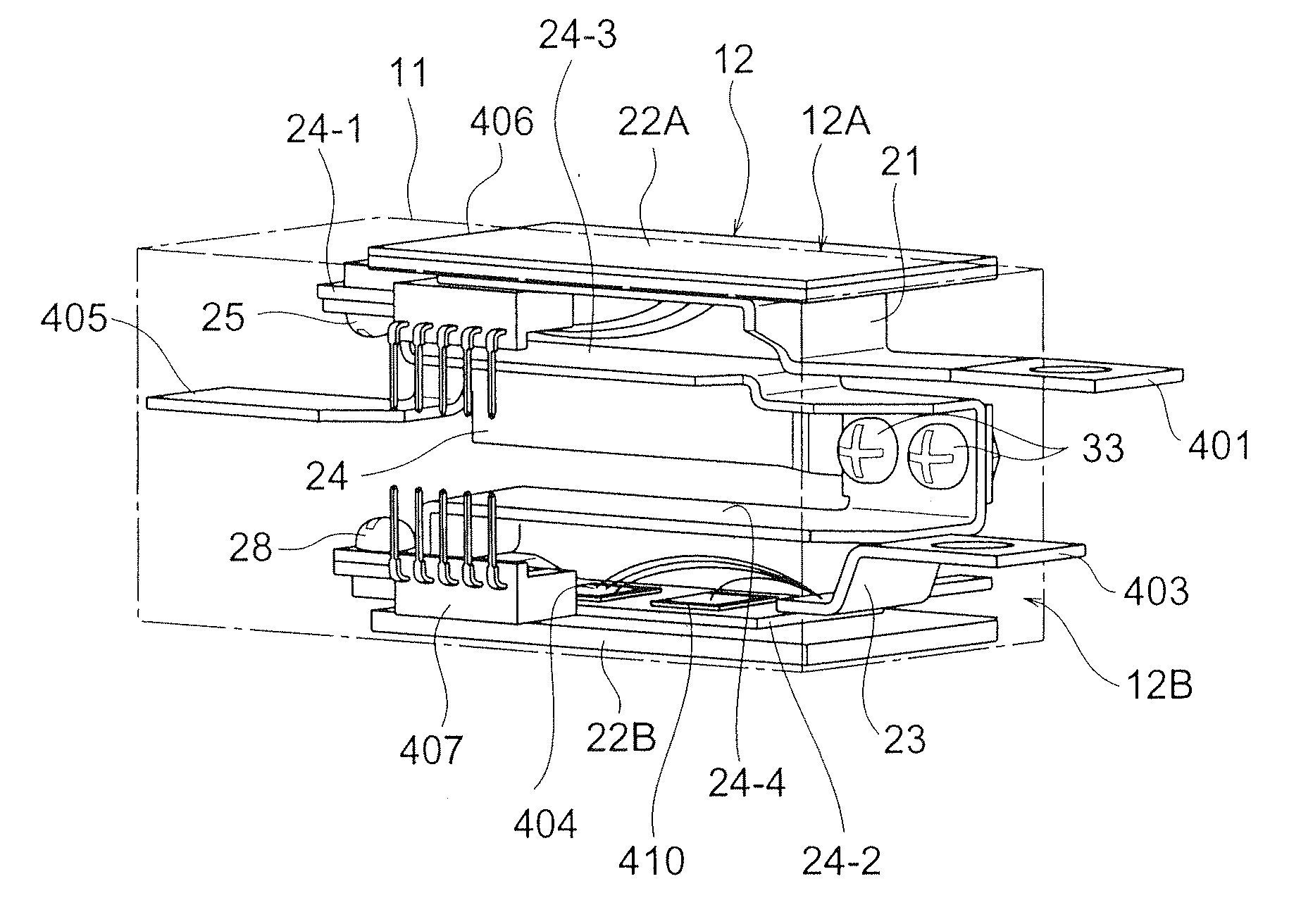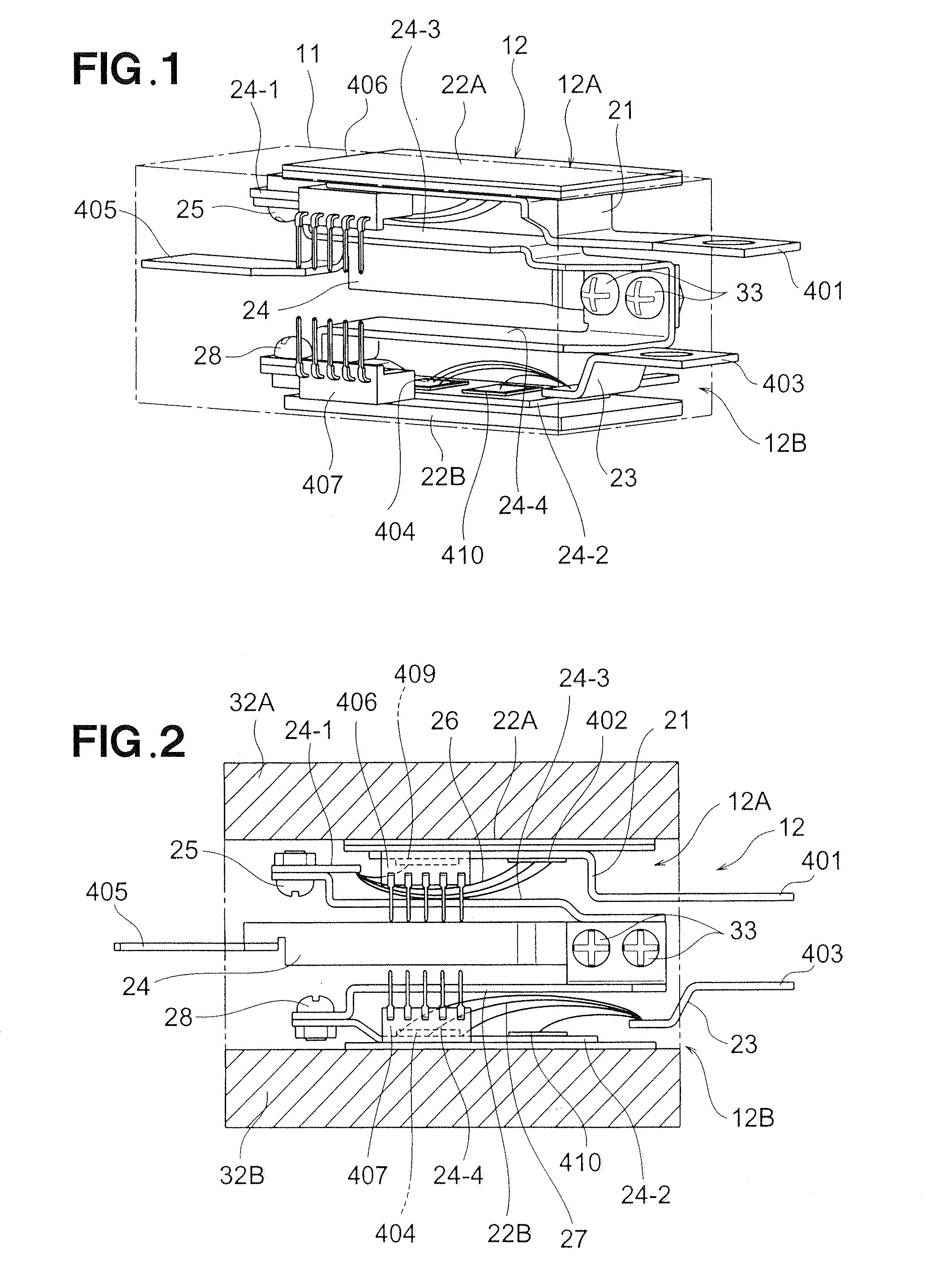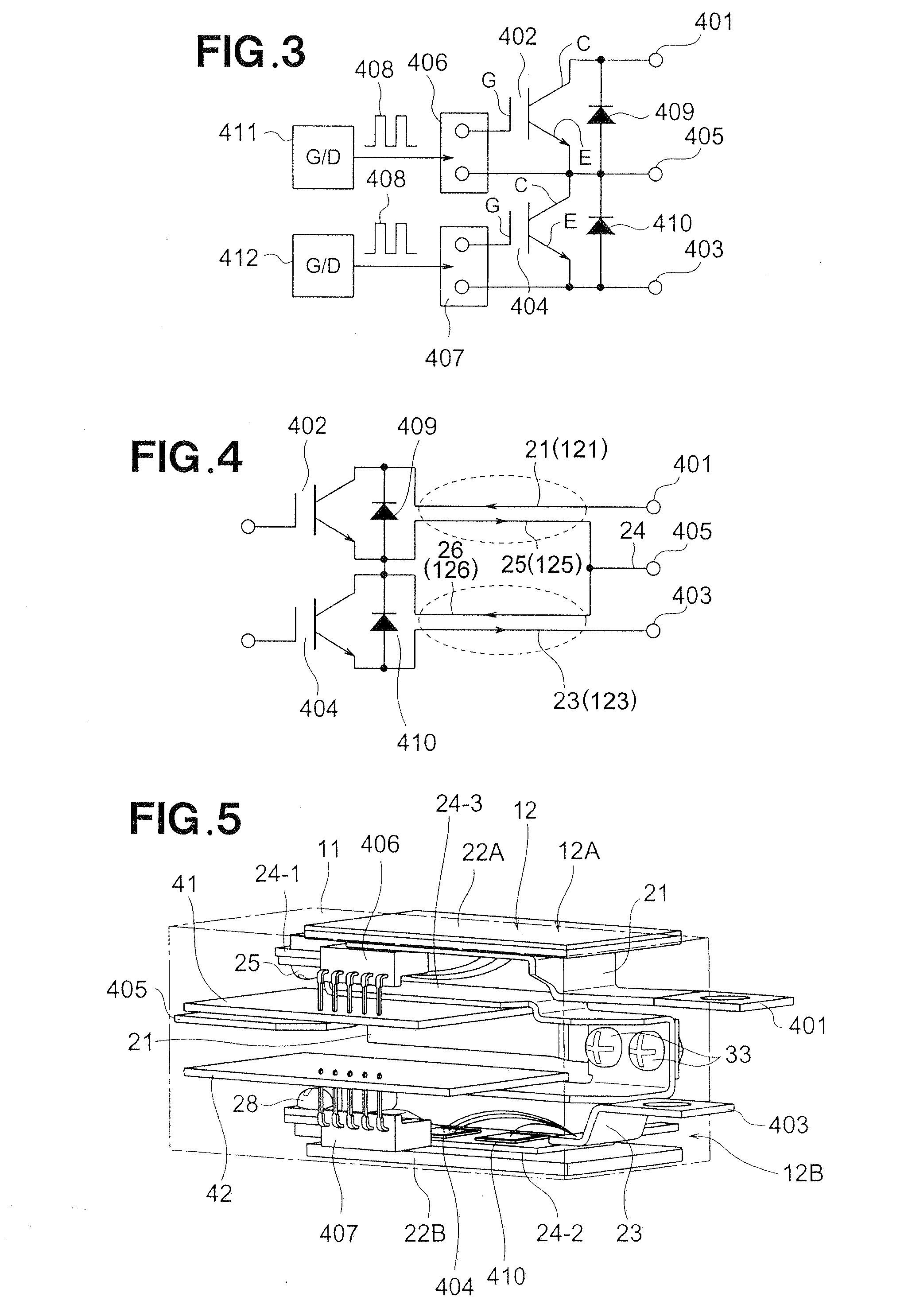Semiconductor device
a technology of semiconductor devices and semiconductors, applied in the direction of solid-state devices, printed circuit details, printed circuit structural associations, etc., can solve the problems of increasing wiring inductance, reducing inductance, anti-noise performance deterioration, etc., to reduce surge voltage occurring during switching operations in the inverter device, reduce the inductance of the high reduce the inductance of the low-voltage bus bar and other circuit portions
- Summary
- Abstract
- Description
- Claims
- Application Information
AI Technical Summary
Benefits of technology
Problems solved by technology
Method used
Image
Examples
first embodiment
[0040]A semiconductor device according to the present invention will be described with reference to FIGS. 1 through 4. FIG. 1 shows the exterior of the semiconductor device and shows the modular structure of an IGBT module. FIG. 2 is a side view from the left side of FIG. 1. FIG. 3 is a circuit-configuration diagram of the electrical circuit of the IGBT module shown in FIG. 1, and FIG. 4 shows the characteristic relationships of the wirings of the IGBT module.
[0041]The semiconductor device according to the present embodiment is a power semiconductor device, and is typically an inverter device for driving a three-phase motor that drives an electric vehicle. The IGBT module shown in FIG. 1 displays the main portions of the inverter device. The configuration of the electrical circuit of the IGBT module will be described first with reference to FIG. 3.
[0042]FIG. 3 shows the electrical circuit portions of a single phase (one phase from among the U, V, or W phases) of the bridge circuit o...
second embodiment
[0086]According to the semiconductor device of the second embodiment, the aforedescribed control substrates 41, 42 that include the gate drivers 411; 412 are positioned using the space between the first assembly 12A and the second assembly 12B. The semiconductor device can therefore be made smaller and more compact.
[0087]In the output bus bar 24 that connects to the output terminal, the region from the bonding portion of the third metal wiring board 24-3 and the fourth metal wiring board 24-4 to the location corresponding to the position of the current sensors 43 is disposed in a perpendicular positional relationship relative to the surface that includes the control substrates 41, 42 on the lateral exterior side of the first and second control substrates 41, 42. According to this configuration, the portions of the output bus bar 24 other than those that correspond to the current sensors 43 formed as magnetic resistance elements are positioned outside the control substrates 41, 42; t...
third embodiment
[0091]According to the semiconductor device of the third embodiment, the high-voltage bus bar 21, the low-voltage bus bar 23, and the output bus bar 24A are provided on the same side in the IGBT module 12. The semiconductor device is made compact, and the output bus bar 24A is positioned in a location removed from the first and second control substrates 41, 42. The effect of output noise on the control substrates 41, 42 can therefore be limited.
[0092]In the description of these embodiments, an N-channel IGBT element was used as the power semiconductor element employed in the semiconductor device. In this instance, the power semiconductor elements in the semiconductor chips are IGBT elements (N-channel type). In the semiconductor chip of the first assembly 12A, a first surface is the collector-side surface, and the other surface is the emitter-side surface. In the semiconductor chip of the second assembly 12B, a first surface is the emitter-side surface, and the other surface is the ...
PUM
 Login to View More
Login to View More Abstract
Description
Claims
Application Information
 Login to View More
Login to View More - R&D
- Intellectual Property
- Life Sciences
- Materials
- Tech Scout
- Unparalleled Data Quality
- Higher Quality Content
- 60% Fewer Hallucinations
Browse by: Latest US Patents, China's latest patents, Technical Efficacy Thesaurus, Application Domain, Technology Topic, Popular Technical Reports.
© 2025 PatSnap. All rights reserved.Legal|Privacy policy|Modern Slavery Act Transparency Statement|Sitemap|About US| Contact US: help@patsnap.com



